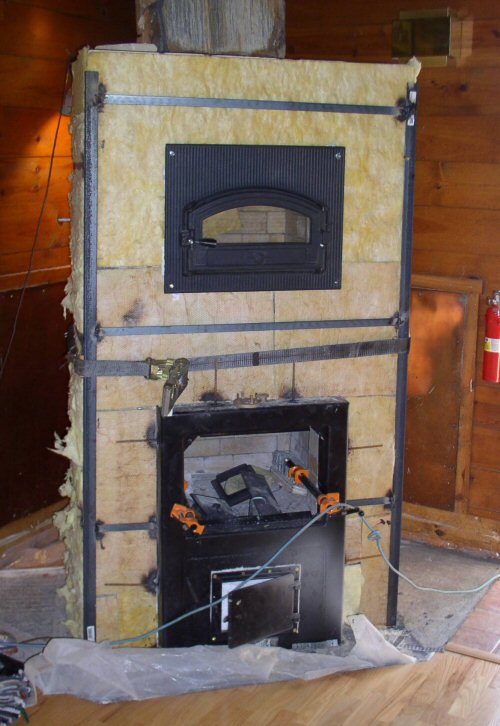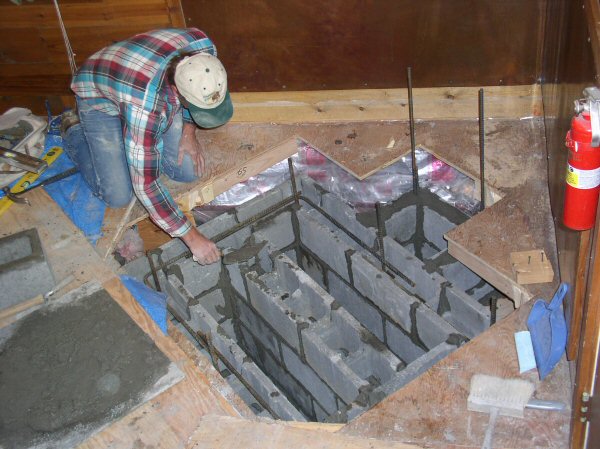


Introduction
Description
Combustion Air System
Comments and Progress Reports
Project Outline
Introduction:This heater was built by: Solutions to Healthy Breathing It replaces an airtight stove, which was causing problems for an occupant with chemical sensitivities. Heater mason: Solutions has received funding from CCHRC for a research
project
Combustion Air System:The combustion air system is designed to be reconfigurable for testing purposes.
Description: Seismic Reinforcing  Reinforced foundation. Comments and Progress Reports:Early loading data
(Excel spreadsheet) Correspondence on early usage experiments and observations (Feb 13/05)
Project OutlineObjectives1. To establish an accepted protocol for testing masonry and other wood-burning devices. 2. To determine the emissions from an existing wood-burning masonry heater. 3. To determine the calculated burn efficiency of an existing wood-burning masonry heater. 4. To determine most effective way to regulate the combustion air to the heater 5. To compare emissions and efficiency between a masonry heater and (1) a conventional fireplace and (2) a high efficiency manufactured wood burning heater. 6. To determine viability of masonry heaters in Alaska. Tasks1a. Purchase and assemble test equipment.1b. Consult with Omni Environmental Labs and Norbert Senf of The Masonry Heater Association in Portland, Oregon to create the testing protocol. 1c. Base protocol on EPA and ATSM standards. 2a. Obtain cord wood with a 20% moisture content (white birch, spruce
and dimensional Douglas Fir for fuel crib construction) 3a. Calculate the energy efficiency of the heater using the weight and moisture content of the wood, the emissions and stack gas temperature. 4a. Record burn time. 5a. Obtain established emissions and efficiency data of a conventional
fireplace and of a high efficiency manufactured wood burning heater. 6a. Determine viability based on quality of emissions, cost effectiveness
and performance.
|
This page was updated on
February 12, 2006
This page was created on February 28, 2005
